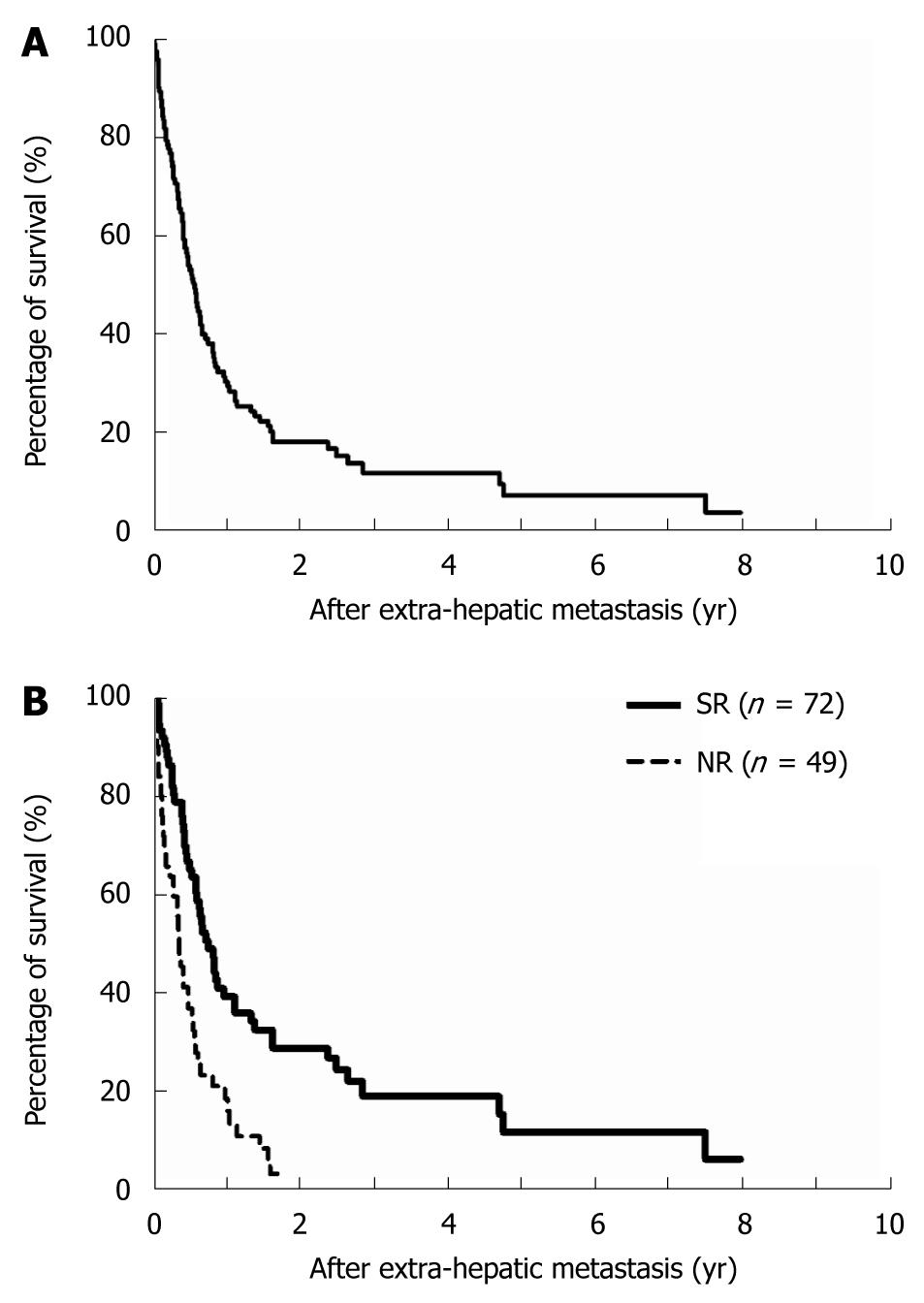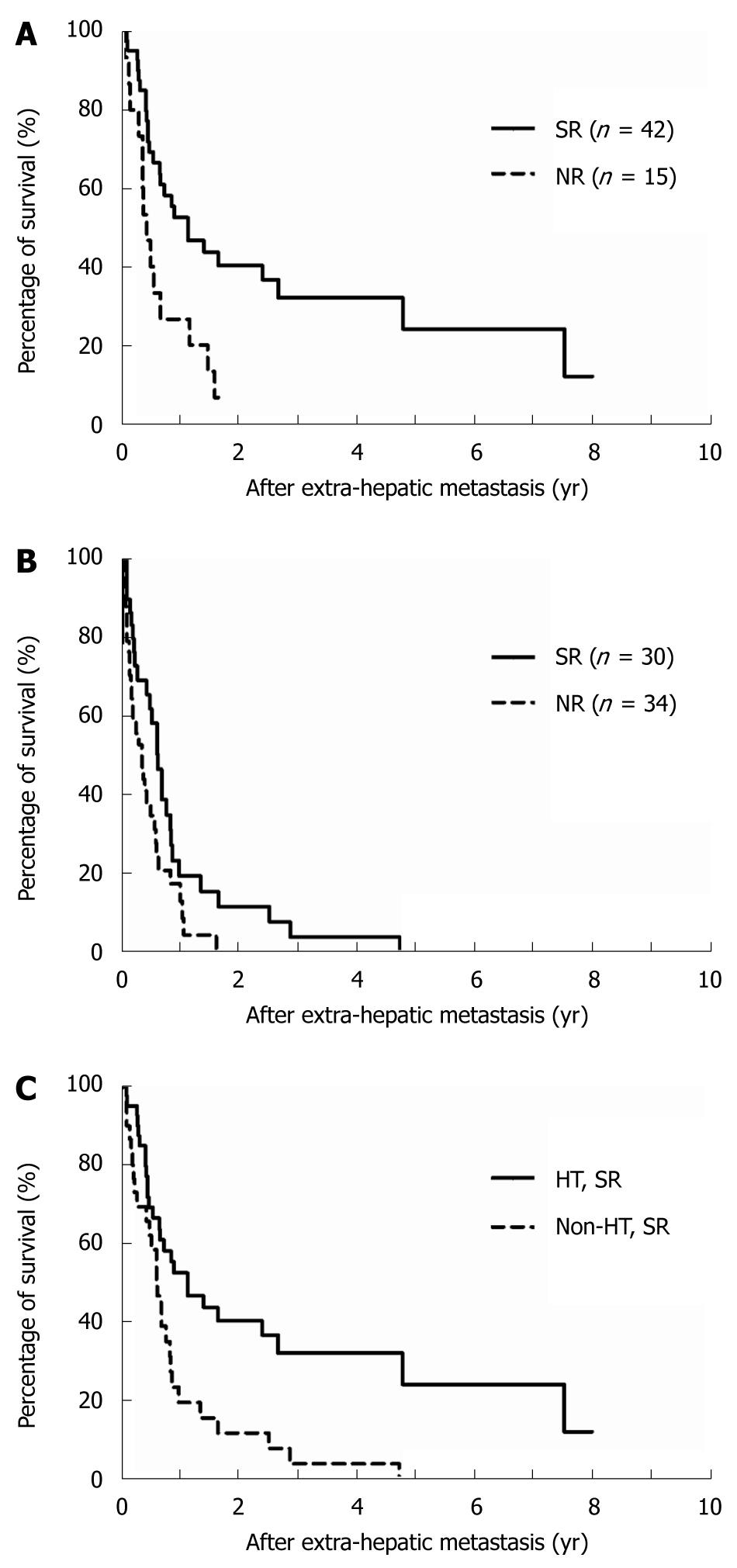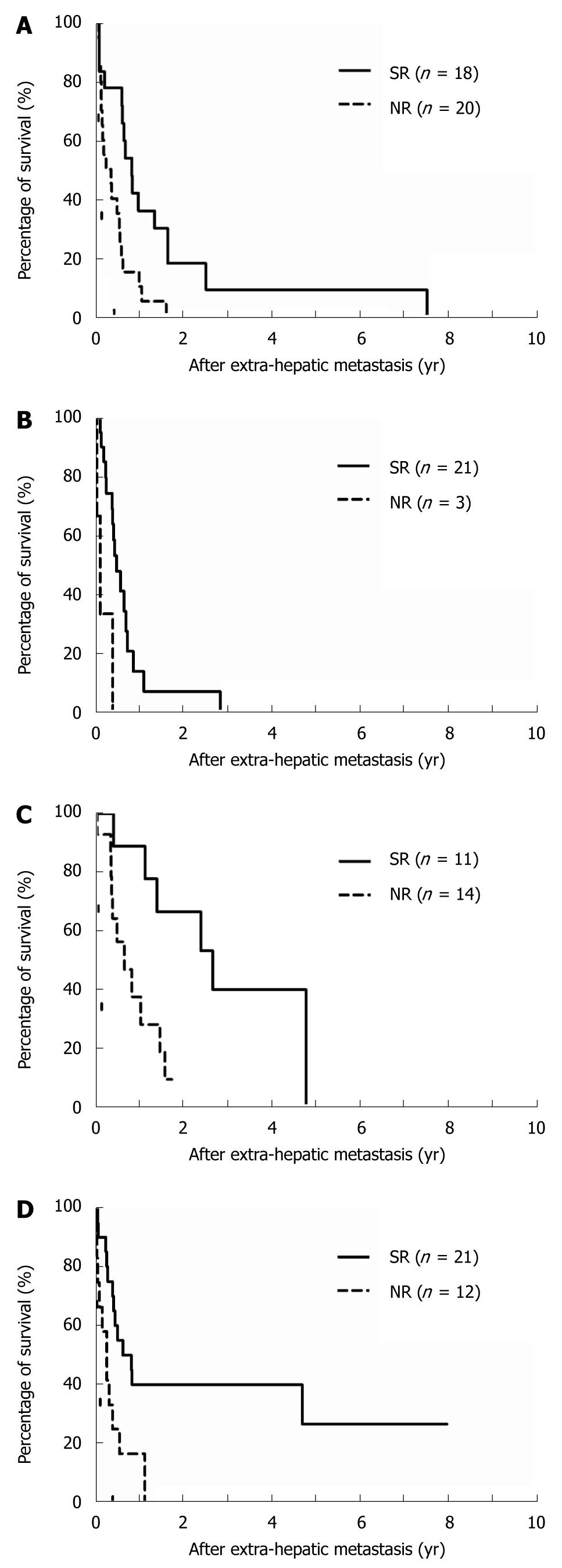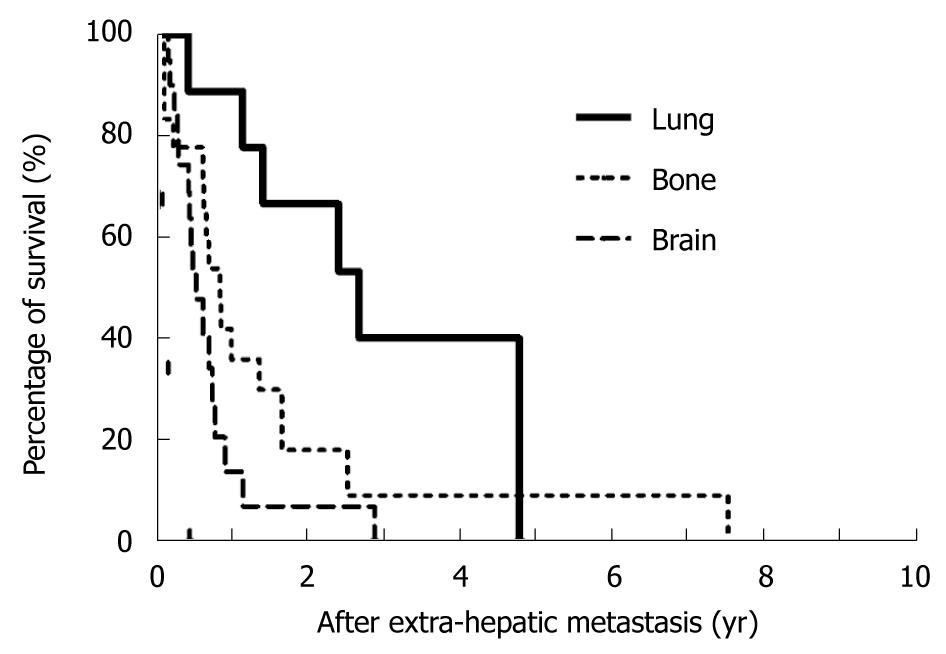Copyright
©2009 The WJG Press and Baishideng.
World J Gastroenterol. Nov 21, 2009; 15(43): 5481-5488
Published online Nov 21, 2009. doi: 10.3748/wjg.15.5481
Published online Nov 21, 2009. doi: 10.3748/wjg.15.5481
Figure 1 Survival rates.
A: Overall cumulative survival curve of patients with extrahepatic metastases of HCC; B: Comparison of survival rates according to whether patients underwent surgical resection (SR) of extrahepatic metastases or not. NR: non-resection (P < 0.0001).
Figure 2 Comparison of survival curves between surgical resection (SR) and non-resection (NR) groups for extrahepatic metastases in terms of patients (A) who had undergone previous hepatectomy for primary HCC (P = 0.
0054), and (B) who had not received hepatectomy (P = 0.0247); (C) Among patients with surgical resection for extrahepatic metastases, the survival curve of the HT group was significantly better than that of the non-HT group. (P = 0.0020).
Figure 3 Comparison of survival curves between surgical resection and non-resection groups according to metastatic sites.
A: Bone, P = 0.0022; B: Brain, P = 0.0055; C: Lung, P = 0.0063; D: Soft tissue, P = 0.0080. The data show that surgical resection resulted in significantly better patient survival rates at all extrahepatic metastatic sites.
Figure 4 Among patients with surgical resection of extrahepatic metastases, the survival curves are compared according to metastatic sites.
Patients who had undergone surgical resection of lung metastases benefit from better survival curves than patients with the other two metastatic sites. (Lung vs bone, P = 0.0418; lung vs brain, P < 0.001).
Figure 5 Suggested strategy for management of extrahepatic metastases from primary hepatocellular carcinoma.
- Citation: Chan KM, Yu MC, Wu TJ, Lee CF, Chen TC, Lee WC, Chen MF. Efficacy of surgical resection in management of isolated extrahepatic metastases of hepatocellular carcinoma. World J Gastroenterol 2009; 15(43): 5481-5488
- URL: https://www.wjgnet.com/1007-9327/full/v15/i43/5481.htm
- DOI: https://dx.doi.org/10.3748/wjg.15.5481













